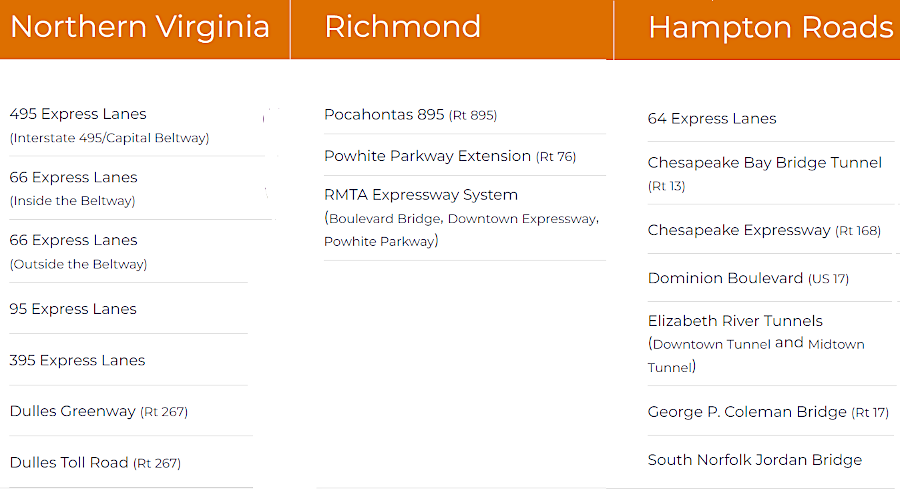
toll roads today are located in Virginia's three urbanized areas
Source: Virginia Department of Transportation, Toll Facilities

toll roads today are located in Virginia's three urbanized areas
Source: Virginia Department of Transportation, Toll Facilities
The first segments of Virginia roads where tolls were charged were ferries. The General Assembly determined who would be authorized to operate a ferry across rivers, and set rates for each ferry. Operators had to invest in their boats and pay the costs for operations and maintenance, and were allowed to retain 100% of the revenues.
Today, all remaining ferries are operated by the state. All but two toll roads and the Chesapeake Bay Bridge-Tunnel are public-private partnerships, where the state owns the road (including bridges and tunnels) but licenses a private corporation to build/maintain the infrastructure and collect tolls for up to 75 years. Primary reason for the partnerships is to limit the state's cost to build new transportation capacity. Toll revenue repays the private company's costs to issue and repay the bonds required to generate the initial funding for construction, so private rather than public debt funds new roads, bridges, and tunnels. Toll revenues also pay for operations/maintenance costs, and profits for the investors.
The Virginia Department of Transportation operates the toll system on I-66 inside the Beltway, so revenue from that segment is not shared with a private corporation. The Chesapeake Bay Bridge-Tunnel was built and is still operated by a separate authority. Toll revenues repay those bonds. The state did not commit its full faith and credit; if toll revenues do not exceed costs, those who bought Chesapeake Bay Bridge-Tunnel bonds will not get repaid on schedule.
The only privately-owned toll road in Virginia today is the Dulles Greenway. It was authorized under Virginia Highway Corporation Act of 1988 and opened in 1995. The state's license to operate it as a for-profit business expires in 2056.
Loudoun County commuters have complained constantly that the tolls are too high, but the formula for rate increases approved by the State Corporation Commission is based on debt and revenues. In 2020, the owners claimed that a road that had cost $425 million to construct was in debt by about $1 billion and had never been profitable, so rate increases were justified.
The incentives for the Dulles Greenway were to limit traffic and charge a high toll, because if traffic exceeded a certain level the company would be required to fund expansion of capacity. While the Virginia Department of Transportation was trying to improve highways to handle ever-increasing traffic flow in the region, the Greenway was setting such a high toll price that its use was flat. Drivers chose to use free highways that had to be upgraded by the state, while the Greenway avoided such costs by using high tolls to divert traffic.
An advocate for defining criteria to be used by the State Corporation Commission when reviewing rate increases, so increasing traffic on the Dulles Greenway to relive nearby congestion would become an objective, said in 2020:1
The General Assembly tasked the State Corporation Commission to start evaluating in 2021 how tolls might deter drivers from using the Dulles Greenway and start clogging nearby highways. Based in part on that issue, in 2024 the State Corporation Commission rejected a proposed increase in tolls for the Dulles Greenway as "contrary to the public interest." The original projections calculated there would be 128,000 drivers paying a toll each year by 2024, but there were only 36,000 customers.
Toll Road Investors Partnership II, the private corporation that owned the Dulles Greenwaym sought additional revenue primarily to pay down its $1 billion debt rather than to maintain or improve the highway. That debt had accumulated after multiple renegotiations of loans, starting back with the original amount borrowed to complete the highway in 1995.
Toll Road Investors Partnership II appealed the rejection of the toll increase, but the Virginia Supreme Court supported the State Corporation Commission decision. Following that decision, Toll Road Investors Partnership II pursued a case in Federal court (U.S. District Court for the Eastern District) to win the right to raise the tool.
One option for the investors was to negotiate with the Commonwealth of Virginia and convert the unique private ownership into a public-private partnership. That arrangement would be comparable to other toll roads in the state. The shift in status would increase the authority of the state to set toll rates in the future, but would also generate a substantial payment to the investors to reduce the heavy debt.2
Transurban, the operator of the I-95/I-395 Express Lanes, committed in its public-private partnership agreement to provide a share of the tolls to the Northern Virginia Transportation Commission (NVTC). For FY2021, Transurban gave 24% of the tolls generated to that regional agency. The Northern Virginia Transportation Commission also receives the toll revenue generated by the I-66 Inside the Beltway Express Lanes, which the Virginia Department of Transportation (VDOT) operates.
The regional agency uses its toll-based revenue to fund projects for the Commuter Choice program along the I-395/I-95 Express Lanes corridor which are designed to reduce the number of cars getting on the highway. Commuter Choice projects include expanding park-and-ride lots, buying transit buses, and expanding the bikeshare network.3
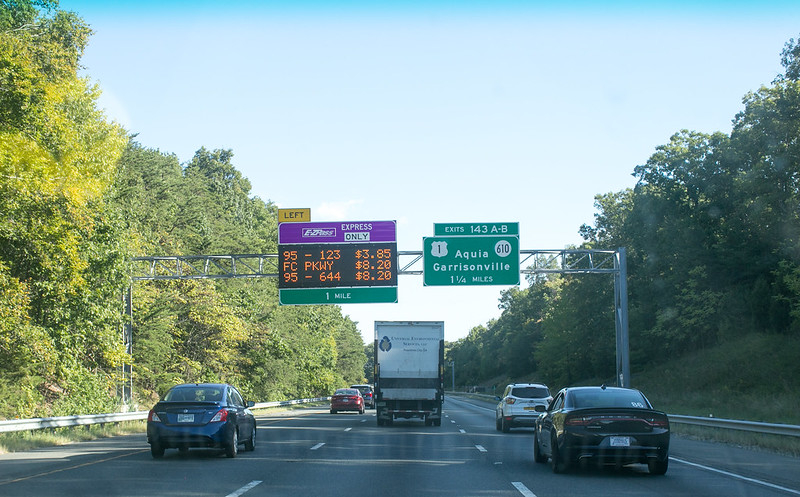
TransUrban controls the High Occupancy Toll (HOT) Lanes (95 Express) on I-95
Source: Virginia Department of Transportation, NOVA Signs
I-66 was widened by Express Mobility Partners in a public-private partnership. It added 22.5 miles of dynamically-tolled Express Lanes alongside three regular lanes on I-66, from I-495 to Route 29 in Gainesville, which opened at the end of 2022.
In total there were $3.7 billion of transportation improvements in the I-66 corridor. They included 12 interchanges rebuilt or modified, 63 new bridges, new and replacement noise walls, new and improved bus service, park and ride lots with 4,000 spaces, and 11 miles of new bike and pedestrian trails.4
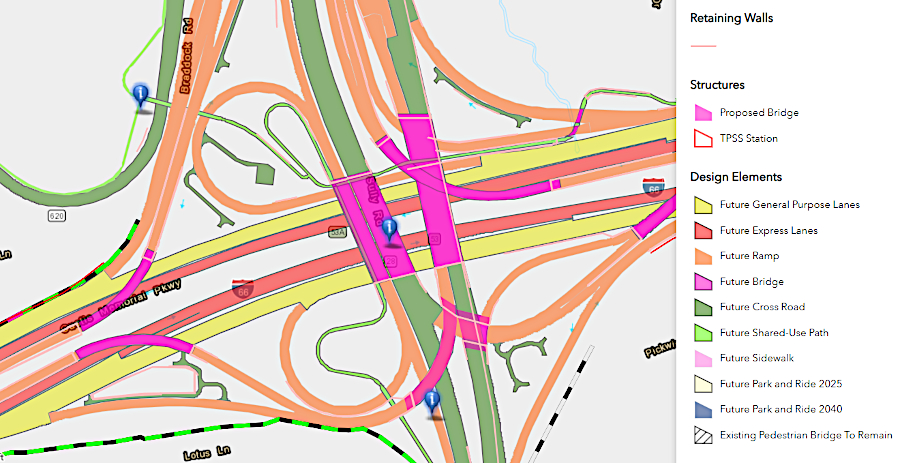
a complicated new interchange was built where I-66 and Route 28 meet in Centreville
Source: Transform I-66 Outside the Beltway, Virginia Department of Transportation, Interactive Mapping Tool
Construction of the Midtown and Downtown tunnels underneath the Elizabeth River, connecting Norfolk and Portsmouth, were funded by tolls. Tolls were eliminated in 1986 after the public debt was retired.
In 2002, Hampton Roads voters rejected a proposed 1% increase in the sales tax to fund transportation improvements. The Virginia Department of Transportation then sought private partners willing to invest private funding to double the capacity of the Elizabeth River tunnels in exchange for toll revenue. Using the authority of the Private Transportation Act of 1995, the state entered into a $2.1 billion private-public partnership deal with Elizabeth River Crossings in 2011 for:
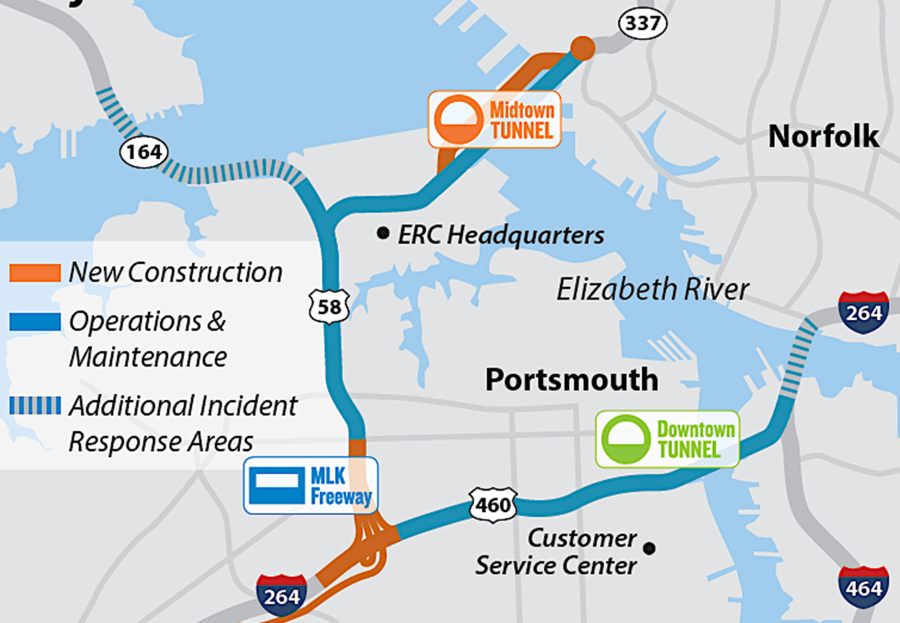
a private company, Elizabeth River Crossings, is responsible for operating and maintaining the Midtown and Downtown tunnels underneath the Elizabeth River
Source: Virginia Department of Transportation, The Downtown Tunnel and Midtown Tunnel Analysis (Figure 1)
Tolls were re-imposed on the existing Midtown and Downtown tunnels in February 2014 to help finance construction costs. Virginia ended up contributing $582 million to the $2.1 billion project. Of the total, $309 million funded construction, $195 million delayed imposition of tolls until 2016 when the second Midtown Tunnel opened and drivers could see benefits from the tolls, and $78 million eliminated plans to add tolls to the Martin Luther King Freeway.
The contract between Elizabeth River Crossings and Virginia Department of Transportation allows for rate increases each year. The increase is based on changes in the Consumer Price Index, or 3.5% a year if that percentage is higher than the rate of inflation. In 2024, passenger vehicles using E-Z Pass during peak hours saw a 10.5% increase to $3.06 per trip. That increase was higher than the 6.5% rise in the Consumer Price Index in 2022, but was authorized for two reasons. The 2021 increase had been deferred due to the pandemic, and the contract allowed peak rates to increase an additional 2% each year until 2026.
After the contract with Elizabeth River Crossings first went into effect, public complaints about the high cost of tolls led to the creation of a 20-year toll relief program to reduce the cost of commuting to work. 75% of the users of the Downtown Tunnel and Midtown Tunnel were commuters.
Initially low-income residents in Norfolk or Portsmouth making $30,000/year or less could get a 50% toll discount on up to five round-trips a week. In 2022 the low-income threshold was raised to provide discounts to people making up to $50,000/year, for up to 10 trips/week. At that time, there were 2,150 people enrolled in the toll relief program, two-thirds from Portsmouth, and they were saving on average $21/month.
Elizabeth River Crossings raised the thresholds again in 2023 to cover people earning $65,000/year or less. At that time, the median income for a household in the Greater Hampton Roads Metropolitan Statistical Area (MSA) was $79,540/year.
Up to 14 trips/week were allowed. All Hampton Roads residents were made eligible for the 50% discount. That expanded discounts for residents of the cities of Norfolk and Portsmouth to include people living in the cities of Chesapeake, Hampton, Newport News, Poquoson, Suffolk, Virginia Beach, Williamsburg, and Franklin plus the counties of Gloucester, Isle of Wight, James City, York, Surry, and Southampton.
The cost of the toll relief program was expanded from an initial $500,000 per year through 2026 up to $3.3 million per year until 2036. To eliminate the annual costs the Virginia Department of Transportation had the option to terminate the private-public partnership, but in 2021 the termination payment was estimated to be $2-3 billion.5
Elizabeth River Crossings was guaranteed a high rate of return, with tolls adjusted according to rises in the Consumer Price Index or 3.5% (whichever is greater), until the contact ends on April 13, 2070. An economist at Old Dominion University assessed the deal as very one-sided:6
At the start of 2025, tolls to pass through the Downtown Tunnel and Midtown Tunnel increased again by 4.3% on average. The average increase was 3.8% for E-Z Pass users, who did not have to pay the additional $4.66 processing fee. That was higher than the increase in the Consumer Price Index. The higher rate was authorized in the state's contract with Elizabeth River Crossings, which was jointly owned by Abertis (a Spanish toll road company) and the John Hancock Life Insurance Company.7
In 2024 the General Assembly had ordered that the Virginia Department of Transportation (VDOT) study if it was feasible to add toll-free High Occupancy Vehicle (HOV) lanes to the two Elizabeth River tunnels. The study concluded that it was not feasible to convert existing lanes to HOV. It would increase traffic congestion, and Elizabeth River Crossings would have to be compensated for a loss of $450-$650 million in toll revenue.
The state budget already included a $77 million earmark in FY25 and $24 million in FY26 ($110 million total) for toll relief for drivers earning up to $65,000 annually, but alternative solutions were sought by legislators seeking a long-term solution that would be sustainable. When the study was ordered, the Speaker of the House and the chair of the Senate Finance Committee were both representing Portsmouth. In the future, when Portsmouth might lack such influence in the state legislature and the cost for toll relief had climbed even higher, funding to subsidize tolls through the two Elizabeth River tunnels might be reduced or eliminated.
State Senator Louise Lucas said before the start of the 2025 General Assembly:8
Between 2017-2025, less than $11 million of toll relief was distributed for use of the Midtown and Downtown tunnels. Portsmouth in particular increased its outreach to ensure qualified residents took advantage of the toll relief program.9
The 2025 General Assembly modified the state budget which had been approved in 2024. After the change, only Portsmouth and Norfolk residents making less than $50,000 a year qualified for up to 14 free trips each week through the Downtown and Midtown tunnels beneath the Elizabeth River. The original 2024 deal enabled residents of five cities in Hampton Roads with high fiscal stress to get toll relief. Residents of Hampton, Newport News, and Franklin were excluded from the free trip option, but still qualified for a 50% reduction in tolls for up to 14 trips/month if their income was less than $65,000 a year.10
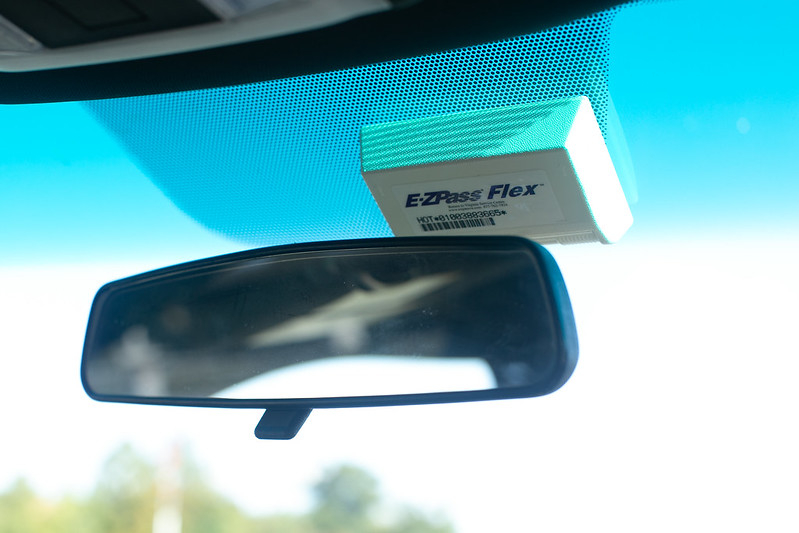
EZ Pass responders automatically deduct tolls without requiring cars to stop at toll booths
Source: Virginia Department of Transportation, NOVA Signs
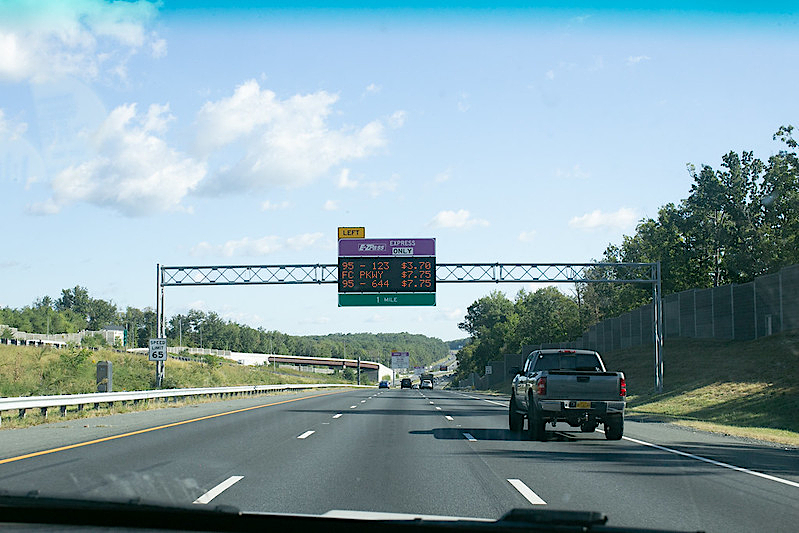
dedicated toll lanes on I-95 are reversed for the morning and evening commutes
Source: Virginia Department of Transportation, NOVA Signs